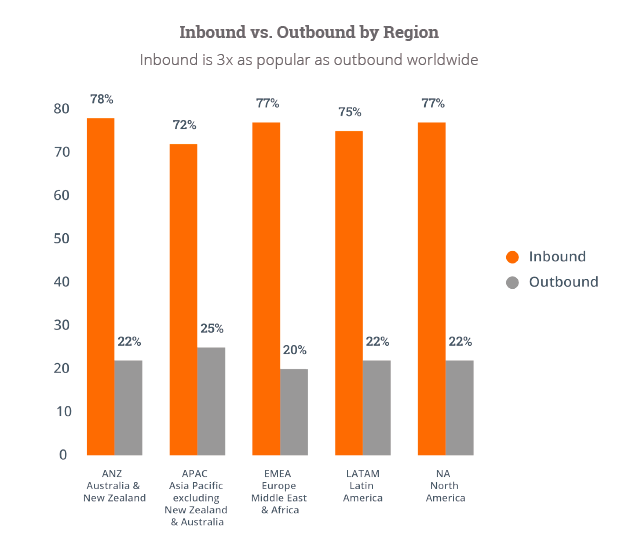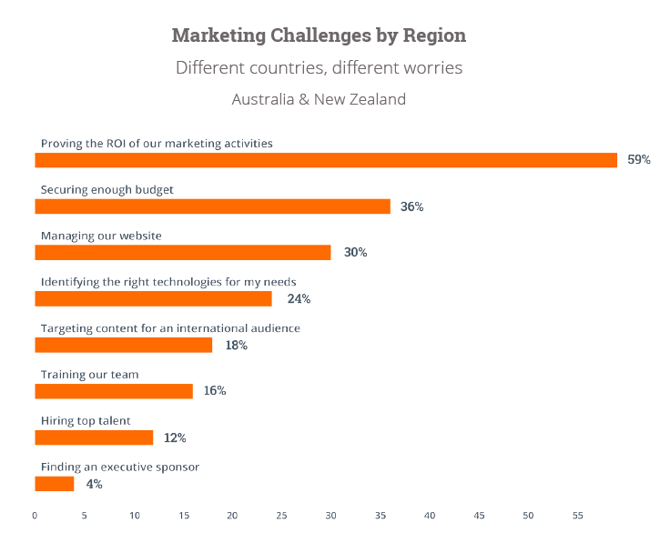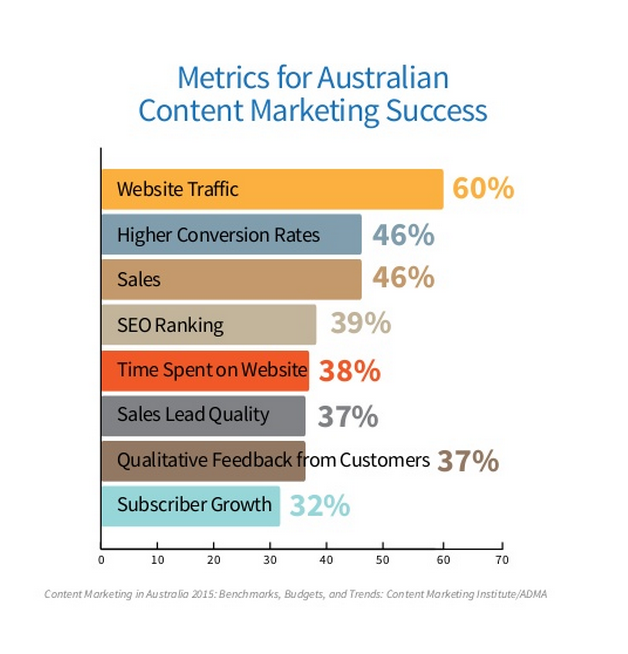In this year’s State of Inbound, the 7th report of it’s kind, the focus was not on inbound as an emerging trend. Rather this year’s data begins to reveal why leaders lead and laggards lag. It also, for the first time, extended the survey to cover the Asia Pacific region surveying close to 600 marketers in Asia Pacific.
One of the key findings was that 78% of Australian marketers favour inbound vs outbound tactics.

This puts ANZ on par with Europe and the US, in fact just a little ahead of them. This would come as no surprise to local marketers. Australia is a mature region with sophisticated marketers. Inbound marketing is not a foreign concept and neither is the concept of return on investment. As professional marketers, we understand that our success is predicated on the success of the business, that budget are tight, that there are no excuses for not having measurable campaigns and that by speaking in a (financial) language, we earn our seat on the executive table.
And while 59% of Australian marketers say that proving the ROI on their marketing is their biggest challenge.

46% of Australian marketers don’t track their ROI!
![]()
So while Australian marketers understand the importance of ROI only 54% of actually track their marketing ROI and it’s hard to measure and report on something that you don’t track.
The Content Marketing Institute’s latest survey of Australian content marketers found a similar challenge with reporting ROI. Australians are investing 27% of their annual budget in content marketing but are struggling to demonstrate an ROI. Why is that? An interesting finding from this report may have the answer. They found that the top metric that is being tracked is traffic to the website and the top objective is engagement. Neither of these measures lead to ROI and are not suitable measurement objectives to have a discussion that ties back to business objectives or revenue.

How do you create a measureable inbound marketing program?
So, for Australian inbound marketers to truly be able to measure an ROI from their efforts, these are the five elements that must be in place.
Start with a tactical content marketing strategy
Stop random acts of content creation and come up with an ongoing program of work that addresses the business pain and challenges of your buyer personas. This needs to be a mix of evergreen content assets on landing pages behind forms, plus the complimentary assets to support the promotion of these key pieces (blog posts, infographics, webinars, podcasts, social media posts, memes).
Invest in marketing technology
Perhaps one of the reasons that Australian marketers are finding it difficult to measure and ROI beyond website traffic is that they don’t have the systems in place, or the systems aren’t integrated, so measurement is virtually impossible.
Align with sales
The success of any marketing program is ultimately tied to revenue. How many new clients were signed as a result of this activity? This is notoriously hard to measure in many organisations. To help ensure the effectiveness of the marketing activity, the marketing and sales teams must be on the same page. Sales can help marketing to define buyer personas, identify business challenges and pain points, provide feedback on which content assets are the most valuable in the sales process. Sales & marketing need to come to an agreement about how many marketing qualified leads are to be generated each month, they need to agree on what a marketing qualified lead looks like, what’s the definition of a marketing qualified lead (company size, location, key account), when should the lead be passed to sales? Sales must also honour their side of the agreement, including how many times should a follow up attempt be made, in what timeframe, and with what approach (email, voicemail, phone etc.). Sales are not allowed to just close leads as “bad leads” without completing the full sequence of follow up activity.
Measure the right metrics
As I mentioned earlier measuring website traffic is never going to produce a concrete ROI. The only metrics that should be measured are the ones that help you make business decisions. How effective is it for driving business results? How many MQLs did it generate? What is the visit to lead conversion rate? What is the lead to MQL conversion rate? What is the MQL to customer conversion rate? Which content assets are performing better than others? Are some generating leads but not customers? Are some better at generating MQLs?
Continuous monitoring and refinement.
With this type of rigour you can continue to refine the program so that you can confidently predict that marketing effort needed to meet the lead generation and ultimately the revenue goals of the business.
The survey showed that a formal SLA between sales and marketing increased ROI. However, only 30% of Australian and New Zealand organisations polled said they had one. If you are unable to do any of the other five elements mentioned above, striving for sales and marketing alignment in 2016 is certainly a worthwhile goal.


